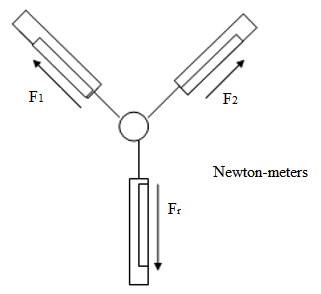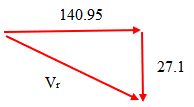Question
- Leaving Certificate Physics (Higher) 2022: Section B Q14 (a)
- Back to the question >
Answer
(i) Distinguish between a vector and scalar.
Both vectors and scalars are measurements. Vectors have both magnitude and direction. Scalars just have magnitude.
(ii) Draw a labelled diagram of the arrangement of the apparatus in an experiment to find the resultant of two vectors.

Method:
- Set up apparatus, as shown.
- Note the readings on the first two Newton-meters, F1 and F2
- Note the reading on the third meter, Fr
Observation:
According to Newton’s third law, Fr should be equal in magnitude but opposite in direction to the resultant of the two upper meters. In this way you have experimentally measured the value of that resultant.
An object is released with an initial velocity of 150 ms —1 at an angle of 20° to the horizontal.
(iii) Resolve the velocity into horizontal and vertical components.


(iv) Calculate the magnitude and direction of the velocity of the object after 8 s.
Assuming no friction, the horizontal velocity won’t change. But the vertical velocity will be affected by gravity.
Vertical:


Height:


This means that after 8 seconds, the object is falling at 27.1 ms —1, but that it still hasn’t hit the ground. Its horizontal velocity will still be 140.95 ms —1.
Resultant velocity:


vr = 143.53 ms —1

